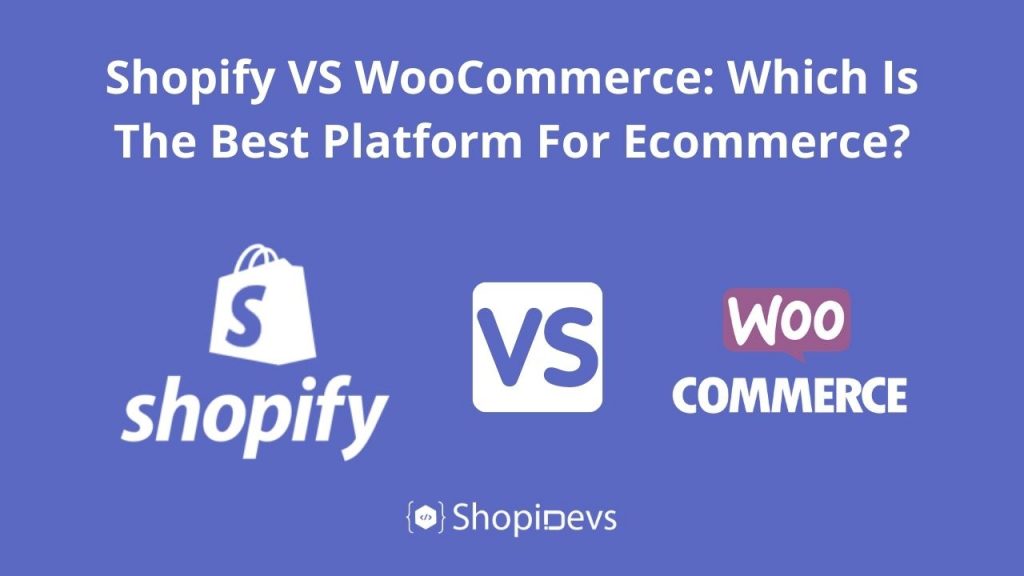Is Shopify good for blogging? Yes! Running your blog on Shopify is a smart move. Putting your blog on a subfolder of your Shopify site, instead of using a different blog platform on a subdomain, can boost your traffic by up to 40%.
If blogging is your whole business, then WordPress is great. But if you’re already using Shopify, keep it simple and use Shopify’s blogging tool.
Is Shopify good for blogging? Known primarily for its eCommerce prowess, Shopify offers a range of features that can be appealing for those wanting to integrate their online store with a blog.
This blog delves into Shopify’s blogging capabilities, examining both its benefits and limitations. By the end, you’ll have a clear understanding of whether Shopify is the right choice for your blogging needs and how it compares to other popular platforms.
Shopify’s Blogging Features
Now we’ll dive into the details of your question: Is Shopify good for blogging? When considering a platform for blogging, the available features can make or break your experience. Shopify, primarily known as an eCommerce platform, offers several blogging features that might surprise you.
User-Friendly Interface: Shopify’s interface is designed with simplicity in mind, making it easy for even the most novice bloggers to create and manage their content.
SEO Tools: Shopify provides built-in SEO tools to help your blog posts rank higher in search engines. From meta descriptions to keyword integration, the platform covers essential SEO needs.
Customization Options: With a variety of themes and customization tools, Shopify allows you to create a blog that reflects your brand’s identity.
Mobile Responsiveness: In today’s digital age, ensuring that your blog is mobile-friendly is crucial. Shopify’s templates are designed to be responsive, providing a seamless reading experience across devices.
Is Shopify Good For Blogs? Is It Worth To Start?

To answer your question Is Shopify good for blogging? You have to decide whether Shopify is a good fit for your blogging needs and involves weighing the pros and cons. Let’s dive into the advantages and drawbacks of using Shopify for your blog.
Pros Of Using Shopify For Blogs
Integration with eCommerce: One of the most significant benefits of blogging on Shopify is the seamless integration with your online store. This integration allows you to drive traffic from your blog directly to your products, enhancing your marketing strategy.
Easy-to-Use Editor: Shopify’s editor is intuitive and straightforward, making it easy to format posts, add images, and create links. This ease of use can save you time and effort.
Security: Shopify handles all security measures, ensuring your blog is safe from hackers and data breaches. This security is crucial for maintaining trust with your readers.
Support and Resources: Shopify offers extensive support and resources, including tutorials and customer service, to help you get the most out of your blog.
Cons Of Creating Blogs On Shopify
Limited Blogging Features: While Shopify offers basic blogging tools, it lacks some advanced features available on dedicated blogging platforms like WordPress. Features like extensive plugin options and advanced customization are more limited on Shopify.
Cost: Shopify can be more expensive compared to other blogging platforms, especially when you consider the cost of themes, apps, and monthly subscriptions.
SEO Limitations: Although Shopify provides basic SEO tools, it doesn’t offer the same depth of SEO capabilities as WordPress, which can affect your blog’s search engine ranking.
Is It Worth Using Shopify For Blogs
So, is Shopify good for blogging? If your primary focus is on integrating eCommerce with content creation, then Shopify can be an excellent choice. However, if you’re looking for a platform solely for blogging with advanced features and extensive customization, you might find Shopify somewhat limiting.
Shopify Vs. WordPress For Blogging

Comparing Shopify and WordPress can help you determine which platform best suits your blogging needs. Both platforms have unique strengths and weaknesses.
Cost For Blogging
Shopify: Shopify’s plans start at $29 per month, which includes basic blogging tools and eCommerce functionality. However, additional costs for themes and apps can add up quickly.
WordPress: WordPress itself is free, but you’ll need to pay for hosting, themes, and plugins. Depending on your needs, this can range from a few dollars to hundreds per month.
User-Friendliness
Shopify: Known for its user-friendly interface, Shopify makes it easy to start and manage your blog without technical expertise.
WordPress: While WordPress offers more customization options, it has a steeper learning curve. However, once mastered, it provides unparalleled flexibility and control.
SEO Comparison
Shopify: Provides basic SEO tools that are sufficient for most users. However, its SEO capabilities are not as advanced as those found on WordPress.
WordPress: Renowned for its SEO friendliness, WordPress offers extensive plugins and tools to optimize your blog for search engines.
Other Pro-Blogging Features
Shopify: Offers integrated analytics, email marketing tools, and social media integration, making it a comprehensive solution for eCommerce and blogging.
WordPress: Boasts a vast array of plugins and themes, allowing you to add virtually any feature you can imagine to your blog.
Shopify OR WordPress?
Choosing between Shopify and WordPress ultimately depends on your specific needs and goals. If you prioritize eCommerce integration and ease of use, Shopify is a strong contender. However, if you require advanced blogging features and extensive customization, WordPress might be the better option. See below chart to find Is shopify good for blogging or not?
| Feature | Shopify | WordPress |
| Ease of Use | User-friendly, easy setup | More complex, steeper learning curve |
| Cost | Starts at $29/month; extra costs for themes and apps | Free core; costs for hosting, themes, plugins |
| Blogging Features | Basic tools, limited customization | Extensive features, high customization |
| SEO Capabilities | Basic SEO tools | Advanced SEO plugins and options |
| eCommerce Integration | Excellent, seamless integration | Requires additional plugins |
| Security | Managed by Shopify | Depends on hosting and plugins |
| Support | 24/7 customer support | Community support; paid services |
| Customization | Limited by available themes and apps | Nearly limitless with plugins and themes |
| Analytics | Integrated with Shopify’s analytics | Google Analytics, various plugins |
| Scalability | Ideal for small to medium businesses | Highly scalable, suitable for all business sizes |
Guide To Create A Shopify Store Blog
Now you know why Shopify is good for blogging? Starting a blog on Shopify involves a few straightforward steps. Here’s a guide to get you started.
Start Writing Your First Blog Post
Begin by navigating to the “Blog posts” section in your Shopify admin. Click “Add blog post,” then enter your title and content. Use the editor to format your post, add images, and create links.



Continue With Additional Blog Posts
When Is shopify good for blogging? Consistency is key to successful blogging. Regularly update your blog with new content to keep your audience engaged and improve your SEO.
Follow the below process…
- Go to your Shopify admin dashboard.
- Click on “Online Store” and then “Blog Posts.”
- Click “Add blog post.”

Incorporate The Blog URL Into Your Navigation Bar
Make your blog easily accessible by adding it to your store’s navigation bar.
> Go to your Shopify admin panel.
> Click on “Online Store” and then “Navigation.”
> Select the menu you want to edit (like Main menu or Footer menu).
> Click “Add menu item.”
> In the “Link” field, choose “Blogs.”
> Select the specific blog you want to add.
> Click “Add,” then “Save.”

Plan Out Your Blog Posts
Create a content calendar to plan your posts. This strategy helps ensure you cover various topics and maintain a consistent posting schedule.
> Go to “Online Store” and select “Blog Posts.”
> Pick the blog post you want to schedule.
> In the visibility section, click “Set visibility date.”
> Choose the date and time for the blog to go live.
> Click “Save.”


Repeat these steps for each blog post to schedule them for future release.
Create Beautiful Blog Post Gallery Using Essential Grid Gallery App:
Some Tips For Improving Blog Post On Shopify!
Is Shopify Good for Blogging? Enhancing your blog posts can attract more readers and improve engagement. Here are some tips to elevate your Shopify blog.
Content Strategy For Shopify Blog
Develop a content strategy that aligns with your business goals. Identify your target audience and create content that addresses their needs and interests.
Optimize For SEO
Use relevant keywords, meta descriptions, and alt text for images to optimize your blog posts for search engines. This optimization helps increase your visibility and attract more traffic.
Engaging Headlines And Introductions
Craft compelling headlines and introductions to capture your readers’ attention. Use curiosity, urgency, or emotional appeal to draw them in.
Visual Appeal With Quality Images
Incorporate high-quality images to enhance the visual appeal of your blog. Use images that complement your content and break up text to make your posts more readable.
Incorporate Links To Additional Sources
Link to additional sources within your blog posts to provide more value to your readers. These links can include internal links to other posts on your blog or external links to authoritative sites.
Final Words
So, is Shopify good for blogging? The answer largely depends on your specific needs and goals. If your primary focus is on integrating eCommerce with your content creation, Shopify’s seamless integration, user-friendly interface, and essential blogging tools make it a strong contender. It provides a streamlined way to drive traffic from your blog directly to your products, enhancing your marketing strategy.
However, if your sole focus is on blogging and you need advanced features, extensive customization, and robust SEO capabilities, platforms like WordPress might be better suited to your needs. Shopify’s blogging tools are more basic and may not offer the same level of flexibility and control that dedicated blogging platforms provide.
Additionally, for those looking to enhance their Shopify store’s visual appeal, apps like EasyBoost: Product Showcase which offer versatile tools to create stunning image, video, and carousel sliders. Find other apps can significantly improve the user experience and make your content more engaging.
In conclusion, Shopify can be an excellent choice for blogging if you value eCommerce integration and ease of use. By weighing the pros and cons and aligning them with your business objectives, you can make an informed decision about whether Shopify is the right platform for your blogging needs.
FAQs
Is Shopify good for blogging compared to other platforms?
Shopify is good for blogging if you need an integrated eCommerce solution, but it may lack some advanced blogging features compared to platforms like WordPress.
Can I optimize my Shopify blog for SEO?
Yes, Shopify provides basic SEO tools, but you might need additional apps or customizations to fully optimize your blog.
How much does it cost to blog on Shopify?
The basic plan starts at $29 per month, but additional costs for themes and apps can increase the overall price.
Is Shopify easy to use for beginners?
Absolutely, Shopify is designed with a user-friendly interface, making it accessible for beginners without technical expertise.
Can I customize my Shopify blog?
Yes, Shopify offers various themes and customization options, though it may not be as flexible as WordPress.
What are the benefits of using Shopify for blogging?
Shopify’s benefits include eCommerce integration, security, user-friendly interface, and mobile responsiveness, making it a solid choice for businesses looking to combine blogging with online sales.
I’m a digital marketing expert and mobile app developer with a deep understanding of Shopify App Store optimization. I contribute insightful articles on Shopify to help businesses thrive online.






